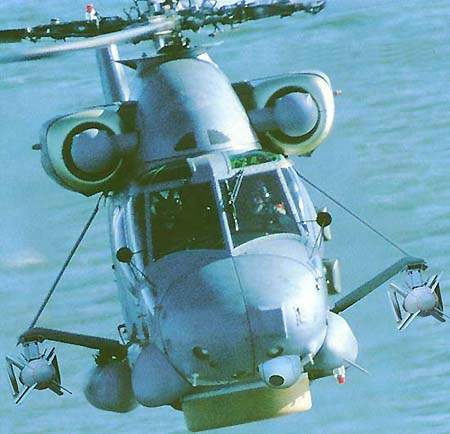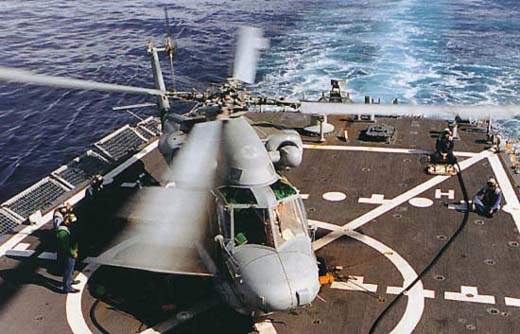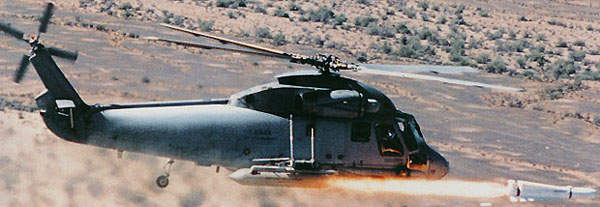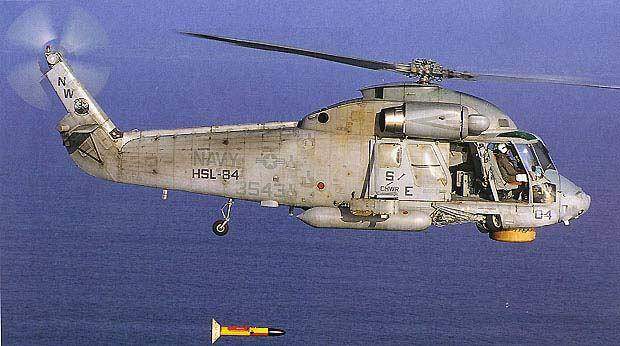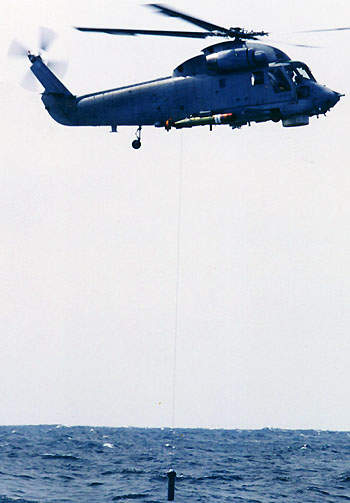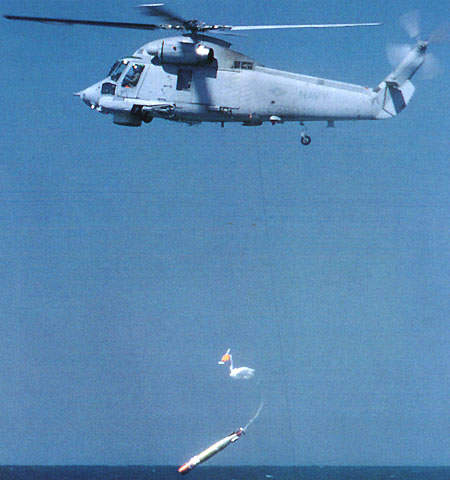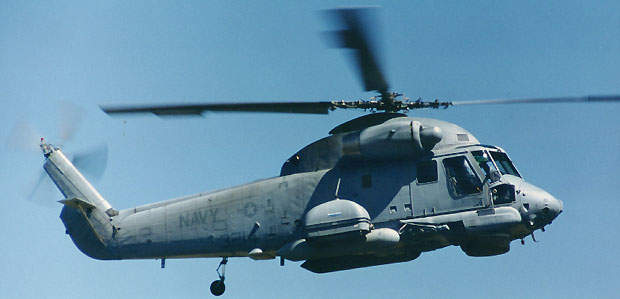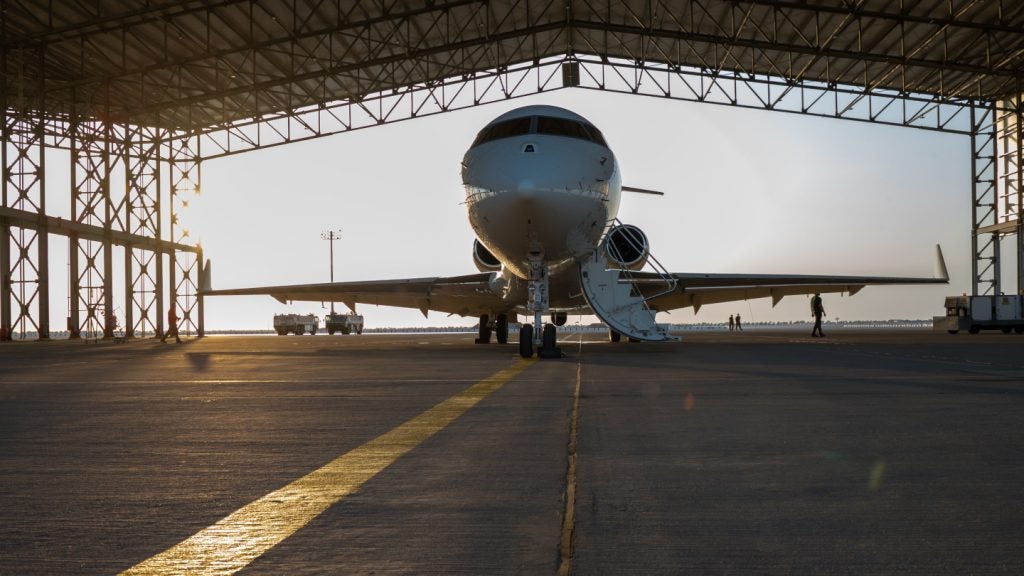The SH-2G Super Seasprite, manufactured by Kaman Aerospace, was the US Navy’s front-line intermediate-weight helicopter. 16 SH-2G helicopters were operational in two US Navy squadrons, HSL-94 and HSL-84. First flight of the SH-2G was in 1985 and it entered service with the US Navy in 1993. The SH-2G Super Seasprite was retired from service with the US Navy Air Reserve in May 2001.
The Super Seasprite SH-2G can be equipped for anti-submarine warfare (ASW), anti-surface warfare (ASuW), over-the-horizon-targeting airborne mine countermeasures (AMCM), surveillance, search and rescue (SAR) and covert operations.
Australian SH-2G(A) Super Seasprite helicopters
The Australian Navy ordered 11 aircraft for Anzac Class frigates in 1997 under a A$667m contract. Deliveries began in January 2001 and ten were delivered by February 2007. The Australian SH-2G(A) is fitted with the Northrop Grumman (formerly Litton) integrated tactical avionics system (ITAS), digital automatic flight control system and Penguin missile.
The SH-2G(A) received provisional acceptance into service in October 2003. The helicopters were grounded in May 2006, after problems with the flight control system and ITAS software.
A review of the programme was initiated in May 2006 and, in May 2007, the RAN decided to continue with the project rather than pursue alternatives.
However in March 2008, the RAN finally announced the cancellation of the programme. The helicopters were returned to Kaman for possible sale to another customer. Any profits obtained will be shared between Kaman and the Australian Government.
SH-2G(I) Seasprite
The SH-2G(I) Seasprite is the latest version of the SH-2G Super Seasprite. It was displayed at the Black Sea Defence and Aerospace Exhibition and Conference held in Bucharest, Romania in September 2008 to attract potential international customers.
The New Zealand Navy ordered five aircraft in 1997, for two Anzac frigates and the Leander Class frigate, HMNZS Canterbury under a NZ$12m contract. Deliveries began in 2001, and were completed in March 2003 and all five have entered service. The New Zealand SH-2G is armed with Maverick missiles.
Egypt ordered ten SH-2G(E), equipped with dipping sonar and a digital hover coupler in 1995 under a foreign military sale agreement (FMSA) with the US Navy. Deliveries began in 1997 and were completed in 1998. Egypt lost one aircraft during aa sea crash in 2006.
In August 2005, the Egyptian Air Force awarded a $5.3m contract to Kaman to modernise two SH-2G(E) Super Seasprite helicopters with an option to include two more aircraft. The two upgraded SH-2G(E) aircraft were delivered in February 2009.
Upgrades included addition of digital automatic flight control system (DAFCS), FLIR systems, health and usage monitoring systems (HUMS), ALE-47 countermeasures dispensing, APN-194 radar altimeter and AHS-1000 attitude heading referencing systems (AHRS)
The Polish Navy has four SH-2G, which were transferred from the US Navy in 2002/3, to serve on ex-USN Oliver Hazard Perry frigates.
Cockpit
The SH-2G has a crew of three: two pilots and a sensor operator (SENSO). However, it can also be flown by a single pilot and SENSO, due to the flexible integrated tactical avionics system (ITAS) designed by Kaman and Northrop Grumman (formerly Litton) Guidance & Controls. ITAS is driven by dual mission data processors and uses two dual 1553B databuses to integrate sensors, weapons, communications and navigation equipment.
The glass cockpit has four colour multifunction displays and new centre console, which has two smart display units to simplify data entry by the pilot and the SENSO.
SH-2G weapons
The SH-2G can be armed with Raytheon AGM-65 Maverick infrared imaging or TV-guided, Penguin infrared imaging, radar-guided Improved Sea Skua, and laser-designated Hellfire missiles.
The SH-2G is cleared for mk44, mk46 and mk50 torpedoes, and is compatible with a wide range of European ASW weapons.
Royal New Zealand Navy SH-2Gs have been fitted with the Fabrique Nationale (FN) MAG-58M 7.62mm machinegun as an urgent operational requirement. First operational deployment with the gun was in May 2008.
Super Seasprite countermeasures
The SH-2G(A) for Australia has Northrop Grumman (formerly Litton) AN/ALR-93 electronic protection measures, ATK AN/AAR-47 missile warning system, BAE Systems North America (formerly Sanders) AN/ALQ-144 infrared jammers and twin BAE Systems Integrated Defense Solutions (formerly Tracor) AN/ALE-39 flare and chaff dispensers. The SH-2G’s for New Zealand are fitted with Northrop Grumman LR-100 ESM.
Sensors
The Northrop Grumman LN-66HP multimode radar provides the helicopter with ASW, ASuW and anti-ship surveillance and targeting (ASST) capability. Alternative multi-mode radar fits available include Northrop Grumman LN-66 HP Enhanced, BAE Systems Seaspray, and Telephonics APS-143 advanced search radar. The APS-143, chosen by New Zealand, has optional inverse synthetic aperture (ISAR) mode.
The Raytheon AN/AAQ-16 FLIR (forward-looking infrared) is available with a laser designator. The SH-2Gs for New Zealand are fitted with a FLIR Systems AN/AAQ-22 thermal imager.
The SH-2 Seasprite helicopter relays acoustic data from sonobuoys back to the host ship for processing via AKT-22 datalink. On the SH-2G, an autonomous submarine hunting capability has been introduced using Computing Devices UYS-503 onboard acoustic processor to analyse returns from its own buoys.
Northrop Grumman ASN-150 tactical navigation (TACNAV) system displays a refined tactical plot and downlinks the picture to its own ship or other ASW platforms.
For the Egyptian requirement, the SH-2G(E) is equipped with L-3 Communications AN/AQS-18A active dipping sonar and digital hover coupler.
Magic lantern
The SH-2G Super Seasprite was the first helicopter qualified with the Kaman Magic Lantern airborne laser mine detection system. In 1996, the US Navy took delivery of the Kaman Magic Lantern laser mine detection system which was fitted on the Super Seasprite for airborne mine countermeasures (AMCM) missions.
The Magic Lantern pod uses a blue-green laser and charge-coupled device (CCD) cameras to sweep the ocean from the surface to below the keel depth of warships. Magic Lantern provides mine classification symbology and video imagery on the existing ASN-1 50 displays.
Engines
SH-2G is fitted with General Electric T700-GE-401 engines. The T700-401 is rated 1,412shp. Second-generation composite main rotor blades (CMRB2) have been fitted on the Super Seasprite, which incorporate filament wound S-glass spars, glass skins, aramid honeycomb cores and aramid trailing edges.
SH-2G performance
The SH-2G can climb at the rate of 10.51m/s. The maximum and cruise speed of the aircraft are 277km/h and 222km/h respectively. The range is 1,000km and service ceiling is 6,217m. It can loiter in air for a maximum of 5.3 hours.

